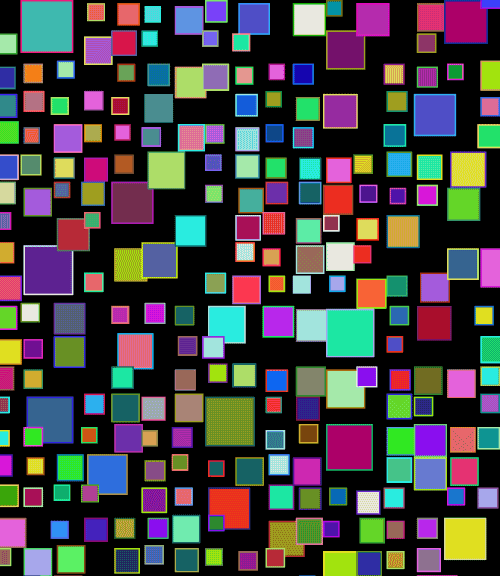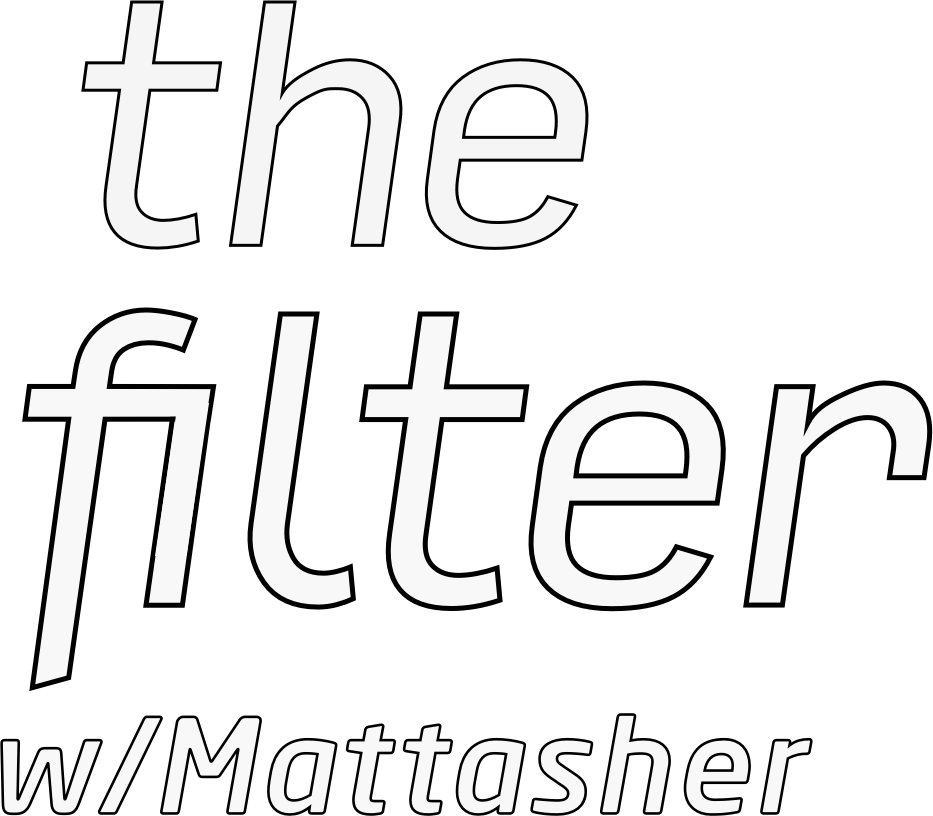
The image above is a small detail from a much larger wallpaper image I created. I wasn’t able to find any nice wallpaper graphics big enough to span my three obscenely large computer monitors, so I created one of my own. I created it with the computer language PHP and carefully tweaked the random variables until I got an effect I liked. I spend the bulk of my days on arbitrage of one sort or another, which means that I spend a lot of time looking for patterns in the noise, or more precisely I spend my time trying to get a computer to find patterns in the noise. To really understand randomness, you have to spend a lot of time faking it. The same could be said about art, perhaps, which got me thinking about the intersection of art and computing…
Is art context free? Specifically, does it change the quality a work if you know that it was created by a computer, by a child or an elephant? I’d have to say the answer to that is both Yes and No. All artwork is contextual, in that it has a place in time and space and history, and that this location has importance. Early cave art is important, even if its artistic merit is low at best. Art can tell a story, document a time period. Particular works fits in to the timeline of an artist’s life in important ways. Art can gain power from its message about the world around us, or from its connections to real-world events. So context absolutely does matter.
In terms of aesthetics, context can matter as well. In a direct way, a bad frame diminishes a great work. Blatant political overtones can turn a stunningly beautiful image into crass propaganda or it can merge beauty and message. There are artists who’ve spent decades playing in the uncomfortable spaces where gorgeous art meets two-fisted commercial and political evangelizing.
Beyond that, works can be striking or beautiful or extraordinary in their own right. Abstract art in particular has a strong non-contextual aspect. The imaginative blobs of Seurat are masterpieces of color and composition whose beauty is independent of where he fits in the pantheon of impressionist painters. Computer-assisted art can fit this description as well. The stunning creations of Ray Caesar depend on 3D computer modeling; plenty of great illustrators do their work in Illustrator.
Too much emphasis on the context behind artwork leads to incentives to cheat and package, since you can fake or manufacture context. An untold number of marginally talented artists have used context and re-contextualization to gain fame and fortune widely disproportionate to their ability to paint. Writers exploit contextual narratives as well, by claiming that their “boiler-plate descent-into-drugs” novel is really a harrowing true-life memoir, or that the author is a blind autistic 12-year-old raised by wolves. Backstory is used to enhance or replace artistic merit.
I should make clear that my thoughts on context and art generation aren’t an attempt to raise up my own highly unexceptional computer-generated graphics to the level of Great Art. Someday, perhaps, computers will be able to create masterpieces with only the slightest of direct guidance from their operators. With the correct evolutionary algorithm it seems possible that there might an automated way to tease beauty out of the background noise, just as some of us work to find patterns in the data clouds.
